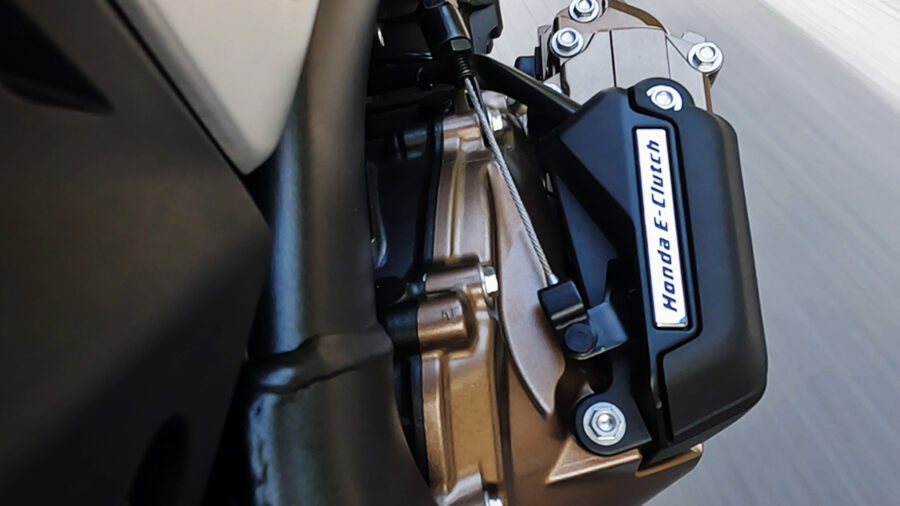Overview
- Honda is exploring E-Clutch-inspired tech for Indian motorcycles.
- It automates clutch use but still allows manual gear shifting.
- The full E-Clutch tech is currently too expensive for India.
- A cost-effective alternative may soon be developed for local buyers.
Introduction: A Small Revolution in the Making
Honda Motorcycle and Scooter India (HMSI) might be on the verge of introducing something subtle yet revolutionary for Indian riders — a cost-effective version of its advanced E-Clutch technology. While this tech is currently reserved for Honda’s premium 650cc motorcycles, the brand is actively considering a simplified version that could make life easier for lakhs of everyday bikers in India.
At the heart of this idea is a desire to blend convenience with the classic joy of riding. Imagine being stuck in bumper-to-bumper traffic and not having to constantly grab the clutch lever — yet still being in control of shifting gears when you want to. That’s the promise Honda is exploring, and it could redefine riding for the Indian commuter.
What Exactly Is Honda’s E-Clutch Technology?
Honda’s E-Clutch is not fully automatic like a scooter transmission, nor is it a conventional clutch setup. It’s somewhere in between. Riders don’t need to press the clutch lever to shift gears, stop, or start — the system handles that part. But the control of selecting gears still rests with the rider.
This creates an experience that’s convenient in urban settings but still engaging for purists. It’s been offered globally on the CBR650R and CB650R, giving mid-segment sportbike enthusiasts a balance between control and ease of riding.
Why India Needs a Cost-Effective Alternative
Let’s face it — the Indian commuter market is highly price-sensitive. Technologies that are standard in international markets often need re-engineering before they’re affordable enough for the masses here. That’s where Honda’s thinking is headed.
According to HMSI’s CEO Tsutsumu Otani, the full E-Clutch setup is too expensive for Indian bikes, the concept behind it — automatic clutch operation — holds significant appeal. Instead of the exact E-Clutch system, Honda is working on something similar but far more economical to produce and implement.
This new tech could find its way to affordable bikes like the Shine 100, CB125 Hornet, or future commuter models. Imagine the boost in comfort and confidence for beginner riders, or those who use bikes for long commutes in chaotic traffic.
What Makes E-Clutch Different from DCT?
Honda already offers a fully automatic transmission called DCT (Dual Clutch Transmission) on some global models. But DCT is far more complex and expensive. E-Clutch is a leaner, less intrusive system that adds convenience without completely removing the traditional riding feel.
More importantly, unlike scooters or full automatics, the rider still has agency — they can engage the clutch if they wish or let the system handle it. This hybrid control could appeal greatly to India’s growing segment of young, tech-savvy riders who want both comfort and involvement.
Comparison Table
| Feature | Full E-Clutch (Current) | Likely India-Specific Version |
|---|---|---|
| Gear Shifting | Manual | Manual |
| Clutch Lever Usage | Not required (automated) | Partially automated or assisted |
| Target Models | CBR650R, CB650R | Commuters like Shine 100, CB125 Hornet |
| Rider Control | Optional clutch input | Expected to retain manual override |
| Pricing Feasibility in India | Too expensive currently | Designed to be affordable |
Conclusion: A Step Toward the Future of Commuting
Honda’s decision to explore an E-Clutch-inspired technology for the Indian market shows the brand is listening — not just to trends but to the real needs of riders. In a country where daily commuting involves frequent stops, sudden slowdowns, and constant gear shifts, an automatic clutch system (even if partial) could offer massive relief.
While this new tech may not carry the full capabilities of the original E-Clutch, a more accessible version that simplifies city riding without alienating traditionalists could be a winner. If Honda gets the balance right — and prices it competitively — this move could quietly usher in a new era of effortless biking for India’s streets.

